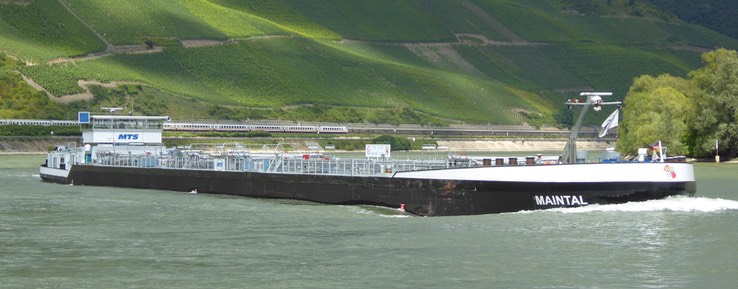
Relieved we had mastered the first section of the Oberrhein we continued our journey. The speed of the current was gradually decreasing while at the same time the traffic increased disproportionally.
Tanker barges, barges with full loads of pebble, coal or scrap-metal, large cruiseships and small motor boats were coming towards us or rocking our boat in passing. We found that the most “surf” is created by the fast small motor boats while some barges had us rocking more gently but for longer time.
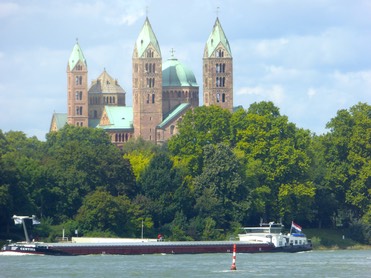
We were glad we were warned about the so called “Buhnen” - stone/concrete barriers- jutting out from the river banks meant to slow down the current and contain it’s banks. The Buhnen are usually submerged, especially during floodwater times, and only visible via the markings, so they can be quite dangerous. The maps help with their location too, and it is really important to stay in the marked channel of the river. Another thing to look out for are the barges' blue boards. Upstream headed barges frequently change their path to the slower flowing outside of river bends.
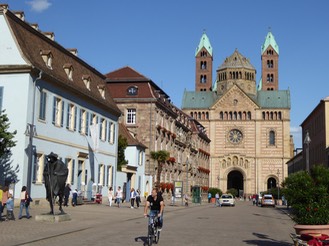
Our next destination was the town of Speyer where Jane would rejoin the crew. We could see the impressive Dome to Speyer from a distance.
The entrance of the old harbour ( “Alter Hafen”) became only visible after passing the large new harbour where the shipyard with it’s cranes and ramps is located. The old harbour is directly in town and has guest places with water and electricity. It lays in the midst of a modern residential complex. Crossing the road we found the old cobblestone streets leading uphill past abbey quarters and quaint small cafés to the main pedestrian area and shopping street. Being a sunny and dry day the outdoor tables of the cafés were crowded.
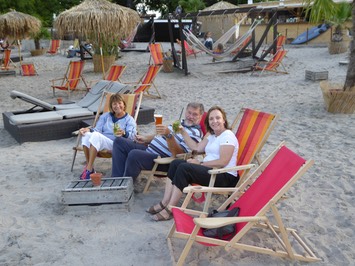
The following day we picked up Jane from the station and returned to the centre where we indulged in the traditional “Kaffee ind Kuchen”.
Later, in the afternoon, three Aussies were spotted at the” beach" sipping Mojitos and enjoying the last sun rays.
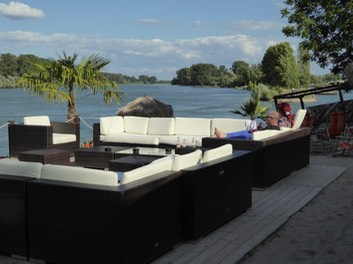
After Speyer the river passes the big industrial areas of the harbours of Mannheim and Ludwigshafen. Silhouettes of big refineries with their tall chimneys has a touch of SciFi feel.
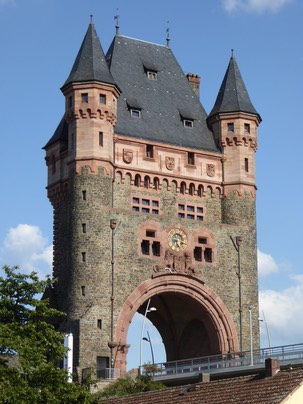
15 kilometres on you find the impressive”Nibelungenbrücke” of the town Worms - nothing to do with “worms” but rather with the Roman Name “Wormatia”. We decided to stop at the yacht harbour of the MYC Worms to fill up with fuel. The harbour entrance is very narrow and due to the current can be tricky to negotiate. The access to the following “Floßhafen” looks easier and the moorings there look quite nice.
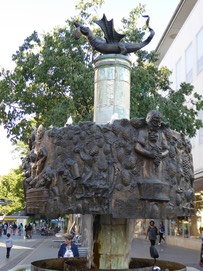
Near-by a bus leaves every 15-20 minutes to the city. The city is the scene of the “Nibelungenlied”, a germanic saga of kings and heroes also known from the operas of Richard Wagner. Statues of dragons, of the hero Hagen about to throw the Nibelungen treasure into the Rhein and the Nibelungen Museum inside the historic town wall tell those old stories.
There are also some contemporary points of interests like the Wheel of Fortune and the Winegrowers Fountain. As most of the city was bombed in the last year of war, post-war residential unit blocks between remains of the old buildings give the city a disjointed look.
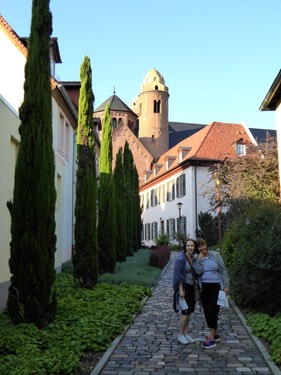
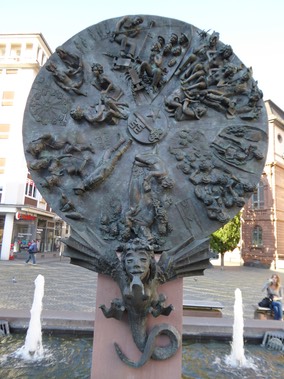
Worms is also called “The city of religion” with a romanesque cathedral and several catholic chapels, a jewish quarter and synagogue and the statue of Martin Luther who was asked here during a Diet to withdraw his criticism of the church.
The nice harbourmaster was sad to see us leave in the morning. He thought it unfair that Austin had 2 women onboard and he had none.